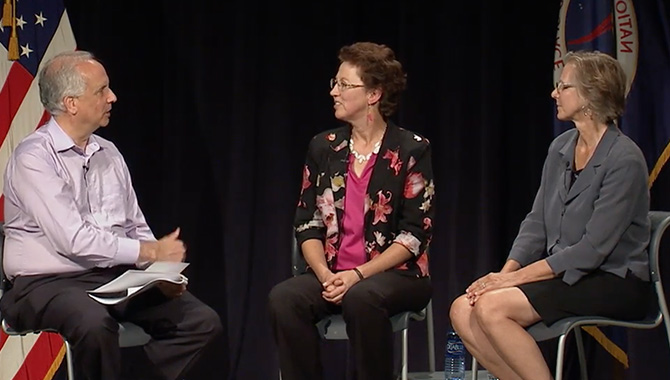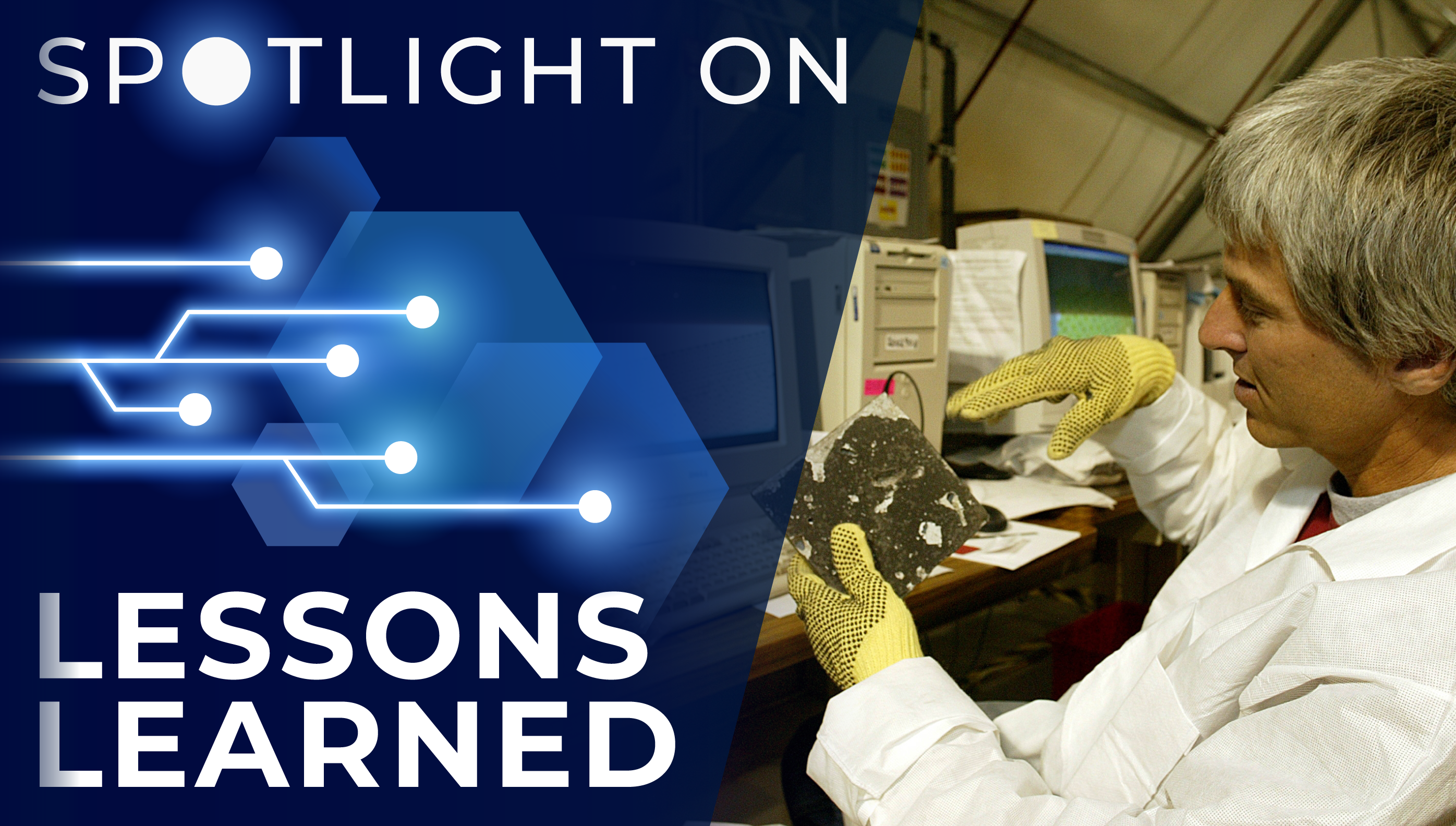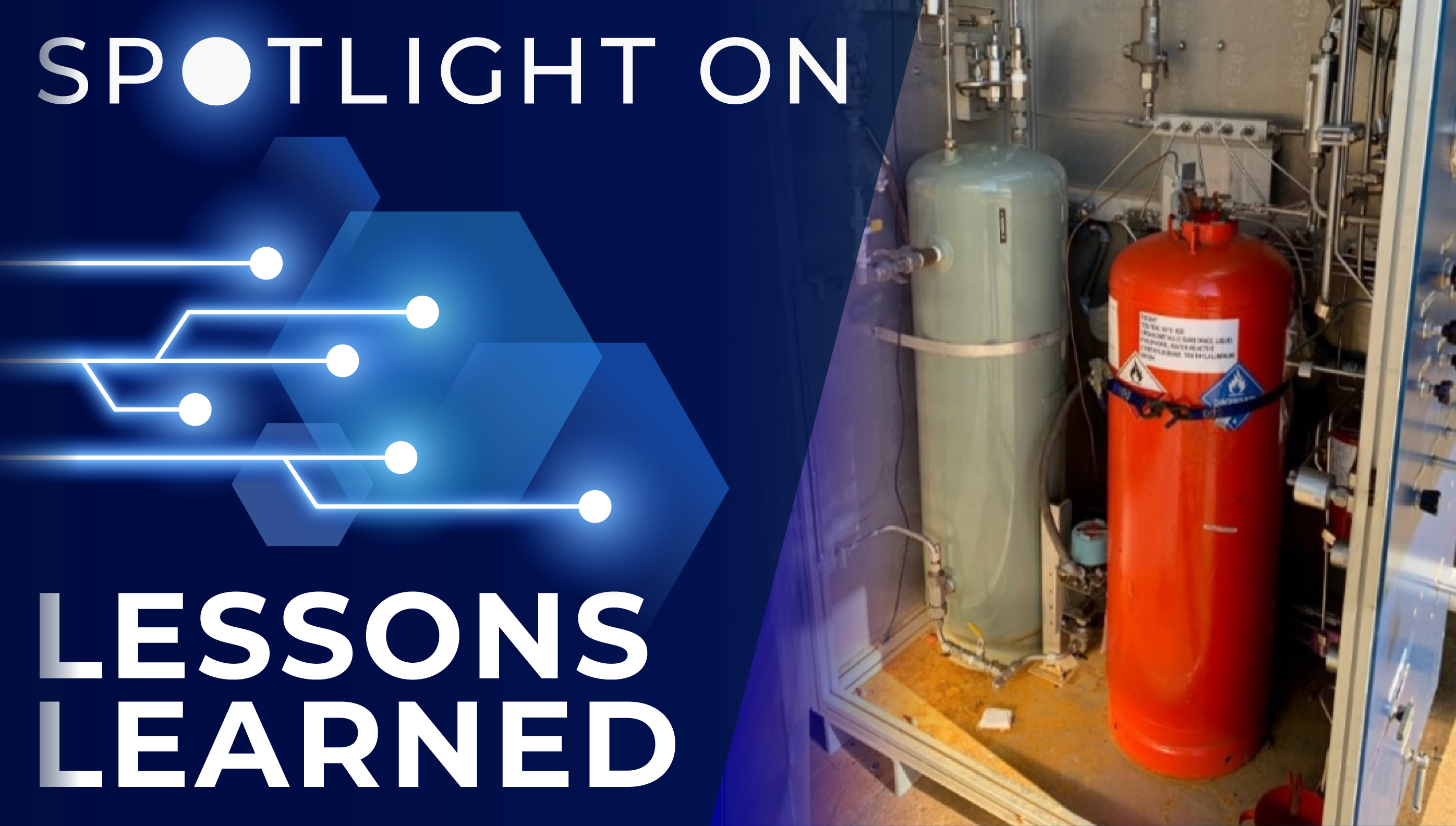
During the 2017 APPEL KS International Project Management course, NASA and international participants conducted meetings to highlight the keys to effective international collaborations. Photo Credit: NASA
Meetings can be designed and executed as an effective knowledge capture and sharing tool.
The NASA CKO Community gathered to discuss the topic of best practices and tips for facilitating a meeting with the goal of capturing knowledge and lessons learned. The discussion generated numerous ideas and recommended resources, and the NASA CKO team partnered with the CKO community to create a guide to share these valuable insights.
Meetings can be specifically designed to be more effective at capturing knowledge and lessons learned. Here are some best practices to ensure that valuable knowledge and lessons from meetings are noted, captured, and utilized by your targeted audience:
Meeting Design and Structure
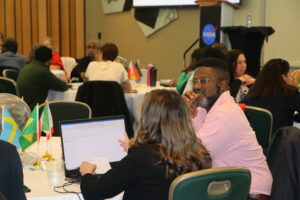
NASA and international participants conducting meetings during the 2024 APPEL KS International Project Management course. Photo Credit: NASA
- Provide pre-meeting training on how to present lessons learned in a constructive and understandable manner. Consider the emotional impact of sharing lessons learned. Provide introductory information to help people identify lessons, and also clarify what will be shared to promote a psychologically safe space. Plan breaks and conversation space. Create opportunities for different personalities to effectively share. As an example, some meeting participants may prefer to share verbally, but in private.
- Explore the best ways to create a meeting on the type of meeting you are planning to hold whether it be In-person, online or hybrid.
- It’s helpful to ask participants what they want to learn from the meeting ahead of time. This can be as simple as asking the question in a registration form for a large meeting or event. Asking about participant interests will give you early insight into how your own understanding of the topic differs from your audience. This way, you can craft the agenda and modify communications to suit your meeting goals.
- Conduct kick-off meeting to introduce people to “do’s” and “do-nots” for lessons.
- Think about how you want effective interaction to take place. Consider meeting etiquette, Q&A structure, tools to be used, breakout activities, polls, quizzes, and any other meeting exercises.
- Create a flexible agenda structure to ensure plenty of buffer time in case the meeting runs long. Schedule enough Q&A time to allow interaction with speakers and audience.
- Pre-work and homework can be challenging for participants to prioritize outside of meeting time, so reserve agenda time for participants to do surveys, lessons, forms, and other key activities during the meeting.
- Ask for preferences on networking and social activities. Some meetings may have a goal to prioritize networking and want to establish relationships, while other meetings may want to limit that. You can provide accommodations based on planned activities and their structures.
- Plan any breakout activities with an eye on good design. Some meeting attendees prefer to stick to a larger group where they won’t draw much individual attention. In virtual meeting breakouts, that just means they might just prefer to use chat or reaction buttons to communicate their ideas and feedback. Other meeting attendees may want to participate in smaller, intimate groups. Providing notice to attendees when they will be moved to breakout groups is helpful for participants to plan their engagement.
- Investigate and decide on what tools should be used to capture knowledge during meetings. Various collaborative tools for taking notes and brainstorming are available, but make sure they’re easy to use and they’re appropriate for the size and experience of your meeting group.
- Consider your meeting recording requirements. Decide if a meeting can be recorded and consider any concerns with your meeting group. In particular, balance the value of a recorded meeting with potentially reduced candor among participants.
Assign Roles
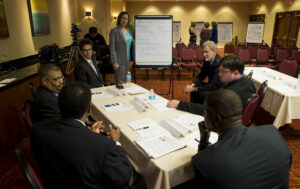
During the SELP graduation in 2014, participants gathered to discuss their experiences and lessons learned. Photo Credit: NASA/Joel Kowsky
- Facilitator: An effective meeting facilitator will encourage active participation, encouraging all attendees to share their ideas, experiences, and lessons learned. A facilitator should promote open conversation, ask questions to get more detail, and request feedback from all meeting attendees to capture all perspectives. People should feel empowered to contribute and engage with others’ contributions and be open to soliciting ideas through different methods to make sure extroverts and introverts are given ample opportunities to provide their thoughts. Some knowledge and lessons might be captured best outside of the actual meeting either before or after the meeting or even during a break when the facilitator might be able to have a one-on-one conversation with a meeting attendee. Some people come up with ideas and share them away from a group setting, so make sure you provide space for this type of knowledge to be shared.
- Note-Taker: Make an attempt to assign a note-taker with technical expertise in the meeting topics to make sure the lessons and knowledge are accurately captured. The notes should document key discussion points, action items, decisions, and any raised questions and concerns.
- Timekeeper: Assign someone to be responsible for keeping each meeting session on schedule. This person works with the speakers so they understand their time and provides time checks and warnings so speakers can wrap up their presentations, get to Q&A sessions, and keep the meeting on schedule.
- Open up different mediums for receiving real-time feedback during your meeting, and adjust accordingly.
- Use live, anonymous polls for gathering meeting responses and encourage participation. Meetings held in Teams can include polls developed in the session. Other tools are also available via NASA’s Workplace and Collaboration Services, which provides support options and checklists for different types of events. TIP: You can customize Teams polls to capture everyone’s names, but only allow the meeting organizer to see them.
- For large hybrid meetings, make sure that in-person and virtual teams have always-open lines of communication with no lag time. This is crucial for being able to be agile for unexpected issues.
- Virtual groups need a little extra time, compared to in-person, because they don’t get that time in the morning or during breaks to say “hey, how’s it going” to their group members. Allow participants to have time to get familiar with one another. The in-person meeting facilitator or speaker should communicate and attempt to keep on schedule for the the described times for their breakout activities; it can be especially jarring for virtual participants when break-out groups end earlier than advertised. To collect insights from breakout groups, provide guidance for each group to assign a notetaker and let them know where and how to submit their notes. Notes can be collected in a real-time collaboration tool or through a form or email to be submitted after the breakout group discussion concludes.
Summarize and Distribute Meeting Notes

Participants during the 2017 International Project Management course are looking over documents at the Kennedy Space Center. Photo Credit: NASA
- Promptly review collected notes and captured lessons. Edit as appropriate. Identify the target audience for collected lessons and develop a communications strategy for reaching this audience.
- Consider different methods to distribute lessons and knowledge collected. Explore using formal lessons learned submission, writing an article, video discussion/interview, a webinar, etc. For additional guidance or support, reach out to your Center or Mission Directorate Chief Knowledge Officer or the APPEL Knowledge Services CKO team.
Links to Resources and Examples
Guides:
Goddard Guide to Pause and Learns:
Examples:
Advancing Spaceflight Knowledge (ASK) Event (2024) (NASA Only)
Examples of articles with clear lessons learned from Human Space Flight Forum (2016)
Human Space Flight Forum recordings
Short interview snippets that came from interviews of various expert panelists at the Human Space Flight Forum
- Brian Anderson on Parachutes
- Kjell Lindgren on Astronaut Training
- Lorie Grimes-Ledesma on Composite Overwrapped Pressure Vessels (COPVs)
- Jessica Parsons on Ground Systems Development and Operations (GSDO)
Recorded Knowledge Management Expo Event (NASA Only)
Short summary articles around lessons learned
Storytelling method for capturing and sharing knowledge and lessons for articles and presentations:
- Storytelling Guide
- Podcast: TECHNICAL STORYTELLING, PART ONE
- Podcast: TECHNICAL STORYTELLING, PART TWO
- Teams Meeting Participant Best Practices
These best practices for meeting knowledge capture and lessons learned can help organizations learn from their project teams and people. Putting in time and effort into effective meeting design for knowledge capture can deliver benefits in future innovation, and production.






